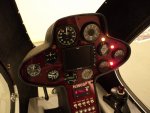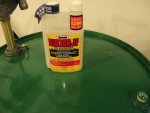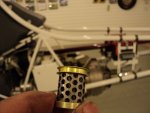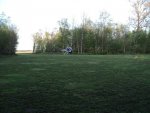II - Jet fuel contamination
Surprisingly, several forms of fungi can survive and multiply in hydrocarbon fuels, especially the fuels consumed by jet aircraft. The microscopic growth occurs in all components of the fuel handling system - storage tanks, pumps, filters, delivery lines and ultimately, the jet aircraft fuel tanks. These microbes grow into long strings and form large mats or globules. The growth appears slimy, and usually black, green or brown, although it may be any color. It may grow throughout the fuel, or at the interface area between the fuel and water bottom layer. As the fuel is agitated - for instance during filling - microbial growth is distributed throughout the fuel system, where it will cling tenaciously to walls and supporting structures.
The organism most commonly found in contaminated systems is Cladosporium resinae. It grows rapidly under widely varying conditions, needing only trace amounts of water and minerals to sustain itself. As it grows, it chemically alters the fuel to produce water, sludge, and acidic by- products. It can attack and destroy fuel tank Iinings and hoses, and pit metals to the point where holes are formed. Other problems can also arise. Fuel tank gauging systems are favorite places for microbial growth and the adhering slime interferes with the operation of the indicating system to cause erratic readings. Filters also are affected, as the slimy material is very difficult to remove by the usual fuel filtering methods. The slime very quickly clogs filters, sometimes to the point of fuel starvation.








